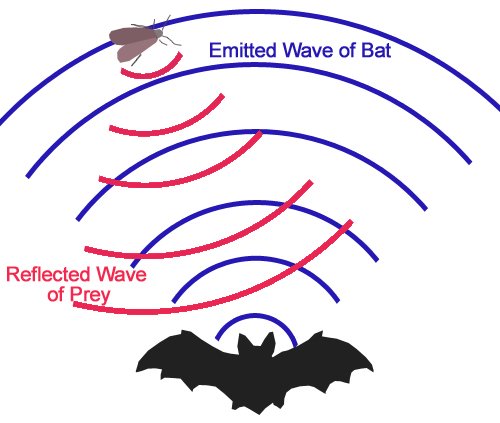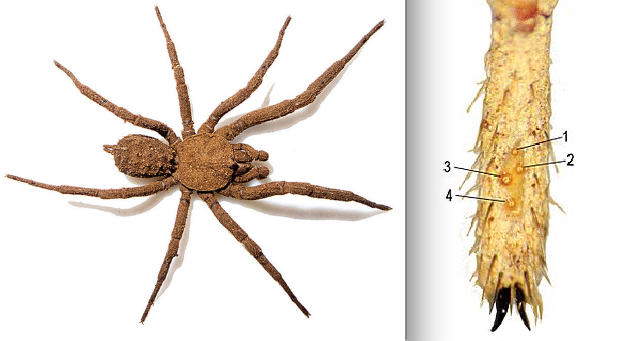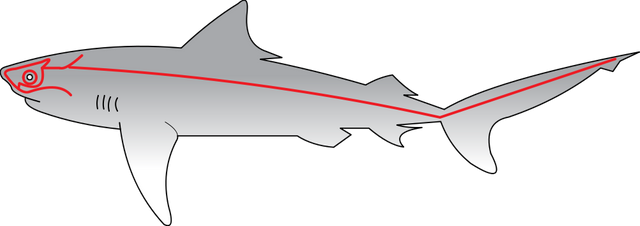The Seventh Senses
If humans didn't have a sense of smell, it would be unimaginable. Even saying we can "sense vibrations" could mean anything from sound vibrations to tactile vibrations. Simply describing function can't give you a real experience.
There's a thought experiment about this. Mary is a brilliant scientist who has extensively studied color. She knows everything there is to know about the color red. But...she has never actually seen it. Mary is colorblind. The thought experiment asks, does Mary really know the color red at all?
Luckily, scientific instruments and observation allow us to at least get a glimpse of some other senses that living beings possess. As we know, human beings basically have five senses: sight, sense, smell, taste, and touch. But what are we missing that we can never grasp any more fully than Mary can grasp the color red?
I did some research and here is what I found. Try to imagine actually experiencing these senses. How would your world change?
Electroreception

Animals with electroreception include platypuses, sharks, catfish, echidnas, cockroaches, and bees. The sense is mainly found in underwater animals: salt water is a better conductor than air, and vision is useless in the pitch black areas of the ocean.
Some animals have to actively generate an electric field to detect distortions, whereas others passively follow the bioelectric fields released by the movements of other animals.
To imagine this in action, let's picture ourselves as a shark (who have the best electroreceptors in the world). When a fish contracts a muscle, it releases an electrical charge that then exchanges ions with sodium and chlorine ions in the water, resulting in weak voltage. Now, as a shark, you have over 1,000 pores around your jaw filled with conductive jelly and tiny hairs that detect and convey this voltage via neurotransmitters to the brain. Thanks to that, you easily hunt down fish under mud or behind rocks. Sharks tend to use electroreception particularly as a final homing sense right before an attack, so experiments have showed that they will actually go for an inanimate but charged object over a living creature at the last second.
Infrared・Ultraviolet・Polarized Light Vision

Infrared Vision
Possessed by mosquitoes, vampire bats, bed bugs, pythons, and some others.
Infrared is probably the most understandable foreign sense, thanks to infrared goggles. We actually have this ability ourselves to a very limited degree. It is the ability to see the heat of any object above 0° Kelvin (-459.67°F).
But just because we can see infrared through special goggles doesn't mean we can experience this light spectrum the way other animals do. Pythons detect infrared radiation not through their eyes but through pit organs, holes in their faces that can sense infrared as heat from about a meter away. Here's the crazy part: the input through those organs does still connect with their visual minds, providing an image that lets them accurately strike prey in darkness.
Polarization
Possessed by migratory birds, many insects, bats, octopuses, mantis shrimp, scarabs, and some others.
Polarized light is light whose vibrations are restricted to a certain direction. Although light naturally flows in all directions, it becomes polarized in specific directions when reflected or scattered. (Surprisingly, humans are actually capable of faintly perceiving polarized light, but it takes training.)
So what's the purpose of viewing polarized light? Let's jump into the perspective of a migratory sparrow. These birds rely on the sun for navigation, but it's often hidden by clouds. No problem: they can perceive some directions of light polarization from which they can deduce the position of the sun at dawn and dusk, even when it's not visible.
The way polarized light is perceived and how it is used by each species is still being studied. Scarabs can see circular polarization, but so far there is only a hypothesis as to why (communication).
Ultraviolet Vision
Possessed by most birds, many fish, some reptiles, jumping spiders, butterflies, bees, rats, cats, dogs, cows, and many more.
So many animals have UV vision that we're practically an exception, blind to something that is blazingly visible to even our household pets. Ultraviolet light is electromagnetic radiation on wavelengths between the light we see and x-rays. There are UV-reflecting patterns on flowers and feathers that we cannot see.
When a cat walks outside, it can see bright urine trails other animals have left and vividly flashing power lines that look drab and grey to us. Cats have photoreceptors in their eyes that let them see into the UV spectrum, which is blocked off by filtering lenses in human eyes. Monet is believed to have been able to see UV light after having a lens removed from his left eye.
Magnetoreception

Animals with this ability include bacteria, worms, migratory birds, fish, bees, ants, wood mice, and many others.
While research indicates migratory birds have some kind of magnetite-based receptor in their upper beaks, scientists are actually unsure how most animals detect the earth's magnetic fields. Nevertheless, experiments show that many animals have an acute awareness of polarity, which is thought to be one of the main abilities that allows migratory birds to unfailingly find their way.
I have also read that dogs always relieve themselves in a north-south direction -- if you have a dog, you'll have to test it out for yourself.
Echolocation

Certainly the most famous of non-human senses, echolocation is possessed only by a small group of animals: bats, whales, dolphins, shrews, oilbirds, and swiftlets.
Bats don't have any special mechanism for sensing their echoes. Instead, they make high-pitched calls and listen to the returning sound waves. It's the bat brain that is special, instantly forming an extremely precise image that will allow it to snap a tiny insect out of the air.
Since humans possess both the ability to make and hear sounds, some blind people have learned to echolocate.
Vibration Sensing

As I noted at the start, the ability to sense "vibrations" can manifest in many ways. Humans may be able to sense sounds waves and vibrations through water, air, or solids...but some other animals have a quite different take.
Whales, elephants, hippopotamuses, some birds, octopuses, and various other animals can detect infrasound, sounds below the human hearing range. Some people believe that this is what alerts animals to incoming tsunami. Elephants use infrasound to communicate, but what makes this interesting is that they absorb the communications as vibrations through their feet and trunks.
Arachnids, various insects, millipedes, and centipedes have hairlike extensions called trichobothria that allow them to detect both vibrations and air currents. Even the very faintest puff of air moves these highly sensitive hairs.
It is often said that crickets have their ears in their legs, but they actually don't "hear" the way that we interpret sounds. Instead, they feel the vibrations of other crickets' song down to the tiniest detail. How this actually manifests in their tiny brains is anyone's guess.
Pressure Sensing

Water: Aquatic vertebrates like fish and sharks have "lateral lines," faintly visible canals running down their bodies that contain fine hairs in a jelly-like substance, much like the electroreceptors described earlier. In fact, the electroreceptors are an evolved form of these lateral lines. Lateral line hairs move in response to water pressure and currents, allowing fish to sense prey and orient themselves. This is what makes schools of fish swim together so fluidly.
Atmospheric: Oh, the fantastic butterfly. They may be charming pollinators, but there's something else special about them: they abound with senses. Hairs on their wings allow them to detect atmospheric pressure, air currents, position, and gravity. Chemoreceptors on their antennae, bodies, and feet let them taste where they stand. Veins in their wings detect sound vibrations. They can perceive ultraviolet and polarized light, and have the widest visual range in the animal kingdom. Monarchs can even detect magnetic fields.

I hope you had fun learning about other senses. There is still much people have not discovered about animal senses, and various of the senses we do know about remain mysterious.
Next time you interact with an animal, try to remember that they lack some of the senses you have and have some senses you can barely imagine. We all live in the same world, but our experiences are not the same at all.
Shark Sensors
Shark
Sparrow By Cephas - Own work, CC BY-SA 3.0
Echolocation
Spider
Spider Leg
Lateral Line
Butterfly
PS I didn't call this "the sixth senses" because I figured people would inevitably think of ghosts.
Nice article!
"Here's the crazy part: the input through those organs does still connect with their visual minds, providing an image that lets them accurately strike prey in darkness." To say it a little bit too simplified: also we can see with other organs than our eyes if necessary: https://www.scientificamerican.com/article/device-lets-blind-see-with-tongues/
That's fascinating! I have heard a lot of accounts of people's brains being rewired to accept unusual stimuli into the visual and other parts of the brain. Our brains are amazingly flexible...
great article
Great job here, very interesting and informative post on various animals extra senses!
Very informative and interesting, thanks for this!
Very informative post! Thanks for sharing! :)